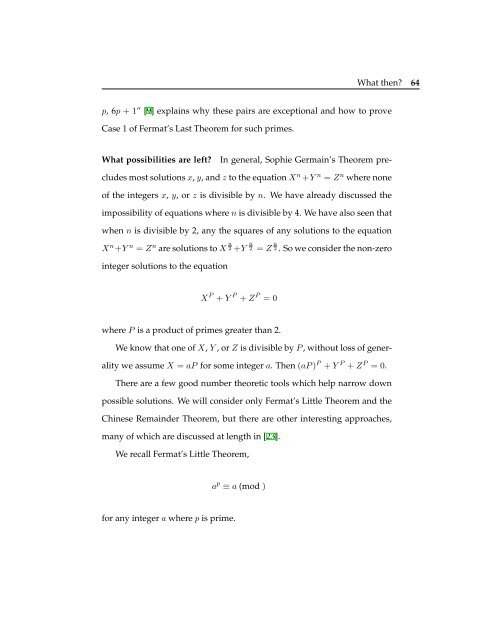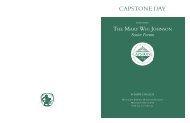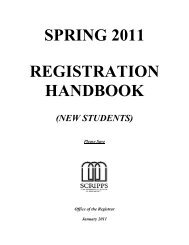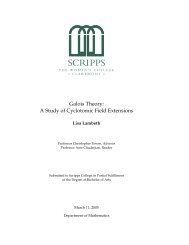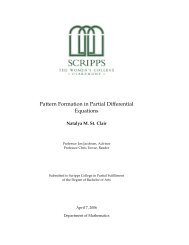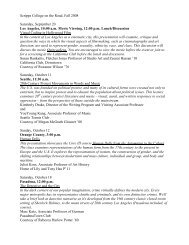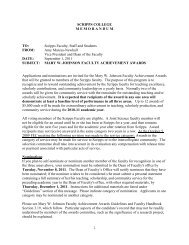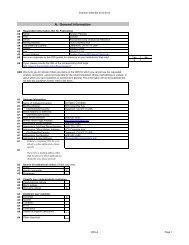Sophie Germain: mathématicienne extraordinaire - Scripps College
Sophie Germain: mathématicienne extraordinaire - Scripps College
Sophie Germain: mathématicienne extraordinaire - Scripps College
Create successful ePaper yourself
Turn your PDF publications into a flip-book with our unique Google optimized e-Paper software.
What then 64<br />
p, 6p + 1” [9] explains why these pairs are exceptional and how to prove<br />
Case 1 of Fermat’s Last Theorem for such primes.<br />
What possibilities are left<br />
In general, <strong>Sophie</strong> <strong>Germain</strong>’s Theorem precludes<br />
most solutions x, y, and z to the equation X n +Y n = Z n where none<br />
of the integers x, y, or z is divisible by n. We have already discussed the<br />
impossibility of equations where n is divisible by 4. We have also seen that<br />
when n is divisible by 2, any the squares of any solutions to the equation<br />
X n +Y n = Z n are solutions to X n 2 +Y n 2<br />
= Z n 2 . So we consider the non-zero<br />
integer solutions to the equation<br />
X P + Y P + Z P = 0<br />
where P is a product of primes greater than 2.<br />
We know that one of X, Y , or Z is divisible by P , without loss of generality<br />
we assume X = aP for some integer a. Then (aP ) P + Y P + Z P = 0.<br />
There are a few good number theoretic tools which help narrow down<br />
possible solutions. We will consider only Fermat’s Little Theorem and the<br />
Chinese Remainder Theorem, but there are other interesting approaches,<br />
many of which are discussed at length in [23].<br />
We recall Fermat’s Little Theorem,<br />
a p ≡ a (mod )<br />
for any integer a where p is prime.


